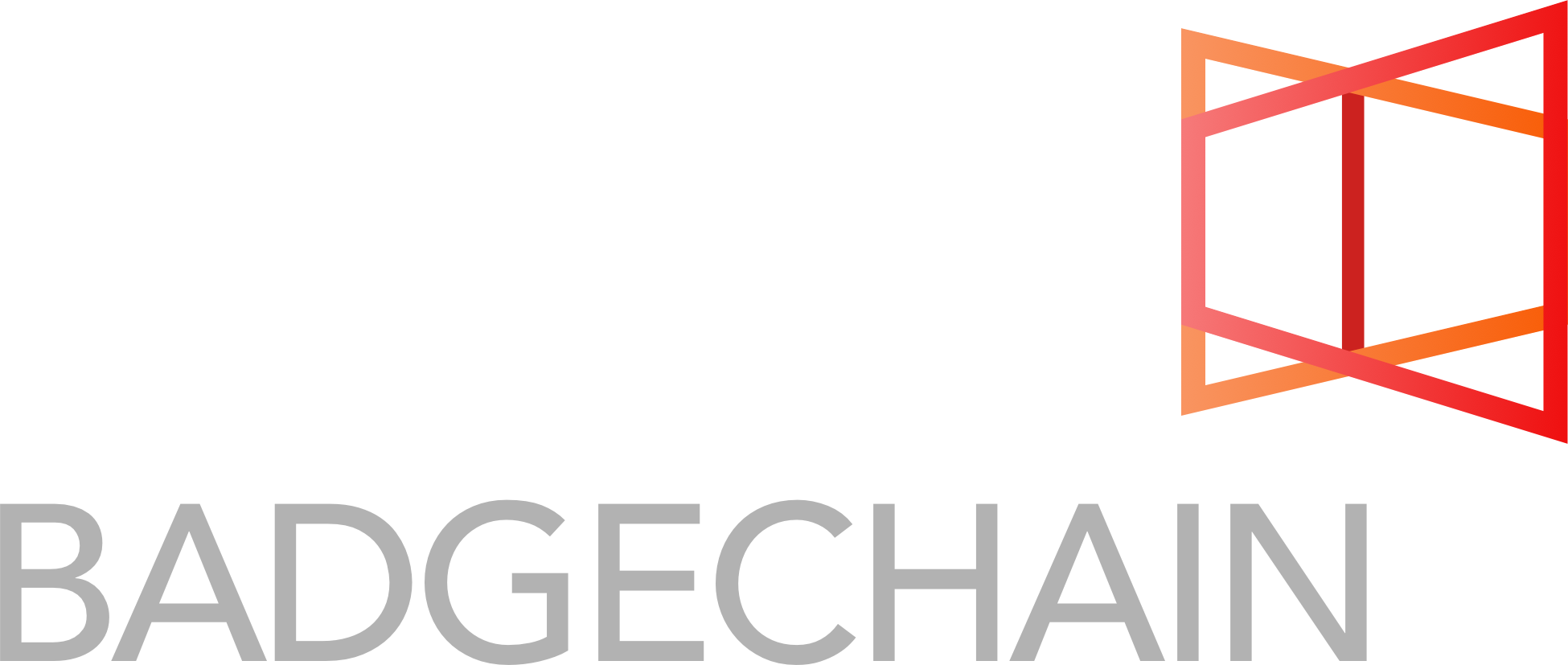From Badges to BadgeChain: Part 2
April 26th, 2016 | Carla Casilli and Kerri LemoieThe Blockchain Part
This post is the second in a series of five blog posts designed to explore, inform, and encourage public discussions about the possibilities, opportunities, and challenges arising at the intersection of Open Badges and blockchain technology. Find the first post, “The Open Badges Part” here.
– Carla Casilli & Kerri Lemoie
Starting from open
Over the last five years, we have dedicated ourselves to working in the open as key players in the open badges revolution. With this series of blog posts, we continue to share our ideas, insights and explorations publicly.
A quick aside
Since we began preparing this second post a few weeks ago, a number of truly excellent blockchain posts have been written here, here, and here. Those recently published posts have made the writing journey of “the blockchain part” of From Badges to BadgeChain both exciting and tremendously humbling.
tl;dr
No matter what else you take away from this post, keep in mind that blockchain technology is still very much in its early and experimental phases. In terms of development, this is blockchain’s Cambrian period. We’re excited to be part of the Blockchain Cambrian Explosion happening right now. And while the technology can get deep, we’ve worked hard to keep it entirely readable and understandable.
A very brief history of blockchain
Nowadays every post about blockchain seems to have the fabled history of where and how blockchain came into being, and this one is no different. Aside from wanting to keep up with all the other Nakamotos, including it here helps to explain our fascination with this potentially game-changing new technology.
In 2008, the mysterious, pseudonymous Satoshi Nakamoto released a white paper describing a decentralized peer-to-peer payment transfer system based on open source software. The white paper was followed up by a reference implementation of the proposed system: Bitcoin.
The Bitcoin initiative has grown significantly and achieved much over the years, not the least of which is succeeding as a testing ground for blockchain technology. Two current examples in the education space making use of the powerful Bitcoin blockchain include MIT (issuing digital certificates) and the Holberton School (who partnered with Bitproof to deliver academic certificates).
As we think about blockchain let us not underestimate the huge amount of work that has gone before: it is impressive and profound. We can talk about blockchain technology today because of Bitcoin. Thanks to this rather seminal connection, it’s exceedingly difficult to talk about blockchain without talking about Bitcoin. Still, the gauntlet has been thrown and we’re giving it a go. Therefore, if you are searching for deep information about Bitcoin, these aren’t the droids you’re looking for. (Instead, feel free to go here and here and here and here and here.)
What is blockchain?
In the simplest possible terms, blockchain technology builds a continuous time-based ledger. A bit more detailed definition: blockchain technology builds a continuous list of records or transactions that result in a time-based ledger. Even further defined: blockchain technology uses peers to build, encrypt, and host a continuous list of records or transactions that result in a time-based ledger (or blockchain). The result: a list of records that build upon each other, one after the other in a sequential fashion.
The peer-based distributed and decentralized database is key. The database achieves its distributed-ness through hosting: all blockchain participants host the ledger in its entirety. Together the ledger and the distributed and decentralized database create powerful opportunities for direct peer-to-peer sharing of things like content, money, contracts, etc. Blockchain eliminates the need for a central authority: because each block must be unique and relative to the previous block, transactions can’t be duplicated. Also, once a block is written to the chain, it is permanent and cannot be changed.
Even with this limited definition, it’s quite obvious that Nakamoto’s apparently simple system possesses great conceptual strength and technological rigor. Imagine the possibilities of this sort of system and you can begin to see why we’re at the beginning of an explosion of interest and development.
Blockchain technology: a growing revolution
Innovations that go beyond what might be called the traditional Bitcoin blockchain are already underway. Two such projects include Ethereum and Multichain. Ethereum custom built their blockchain as a way to decentralize processing of smart contracts (tiny programs that can do things like modify data or perform decision-making tasks). Multichain’s open source solution aims to address issues of privacy and openness by providing the capability for the creation of private blockchains.
While financial transactions have been the dominant historical reference point for discussions of blockchain, new use cases for the ledger are arising, e.g., identity management, and storage for government data, legal, and business records. Its seemingly endless potential has convinced us that further exploration, especially with regards to open badges, is warranted.
What’s next
This intentionally brief synopsis of the birth and technological structure of blockchain provides meaningful context for what we’ll be covering in upcoming posts. With each post we continue to provide the rationale for our ongoing interest in BadgeChain. Our next post will dive into how the two protean tools, open badges and blockchain, might work together.
We welcome your questions and comments and encourage you to continue to contact us at badgechain.com. Thanks!
—
While you wait for the next From Badges to BadgeChain post, you might enjoy reading these selected BadgeChain team posts
Kerri Lemoie: Open Badges for Keeps — Now and Near
W. Ian O’Byrne: What is Blockchain
Serge Ravet: #Openbadges + #Blockchains = #BitofTrust ?
Originally published at medium.com on April 26, 2016.

Follow Us